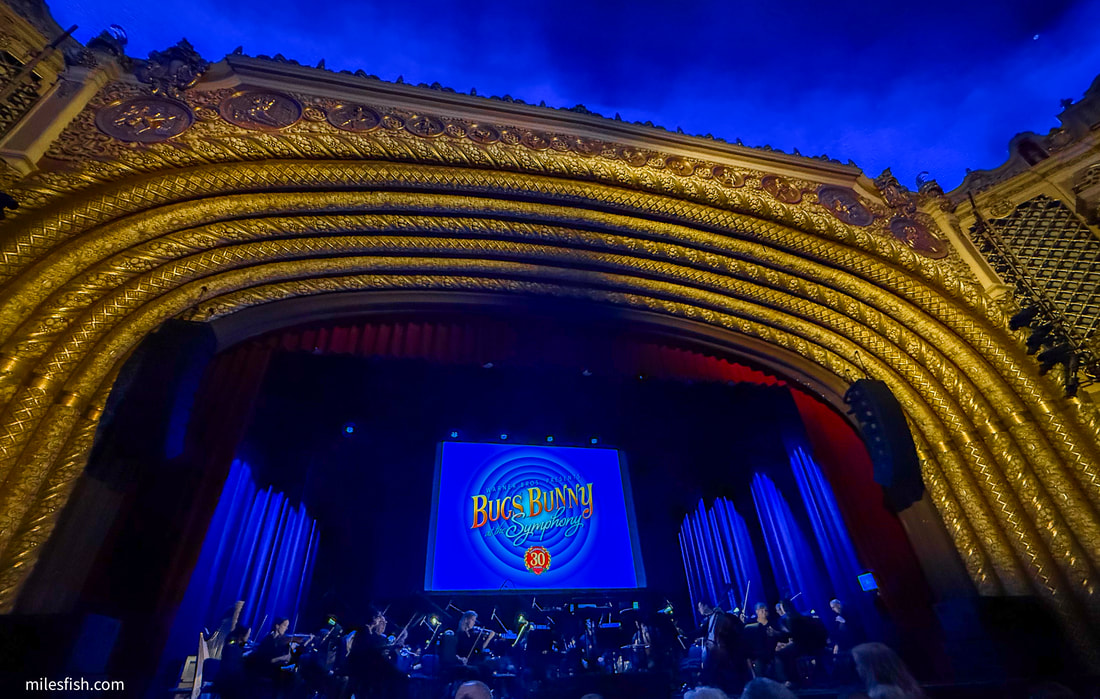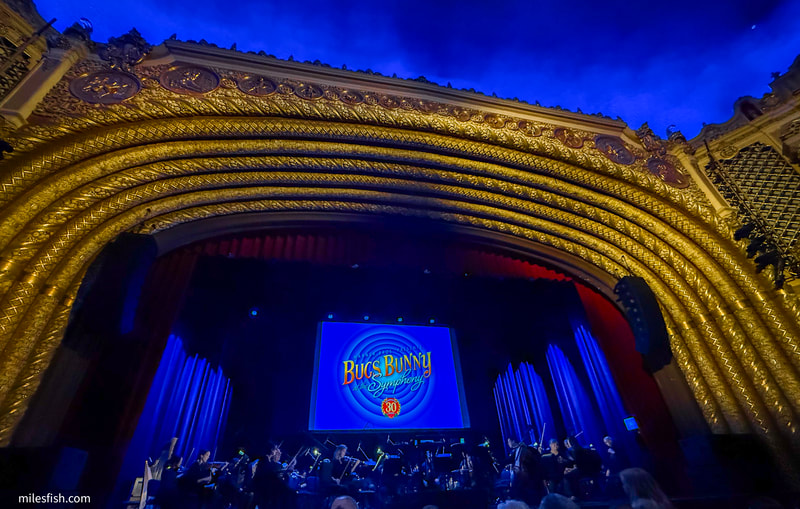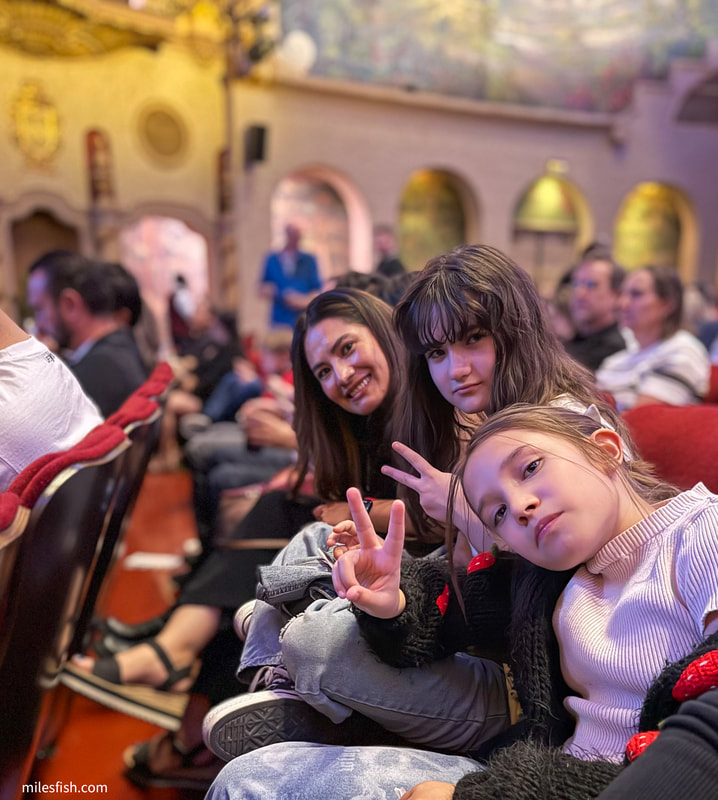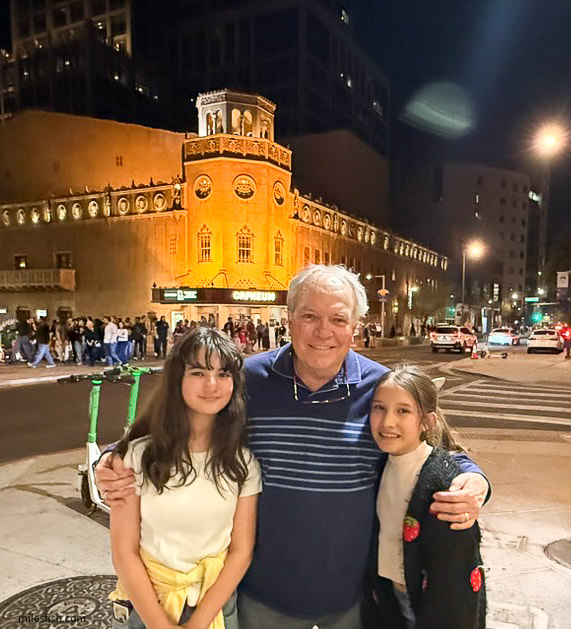Starter: Ad Music
T-Mobile
Intel
BMW
Mac
A Little Something extra: Ad Hacks
_____________________
History of Romanticism
__________________________________
1830-1900
Lecture 8: Romantic Music Period
_________________________________
__________________________________
1830-1900
Lecture 8: Romantic Music Period
_________________________________
Romantic Music Today
OVERVIEW
30 Themes
Planets-Mars
Planets-Jupiter
StarWars
Raiders
Tchaikovsky (Swan Lake)
Titanic
____________________________________________________________________
OVERVIEW
30 Themes
Planets-Mars
Planets-Jupiter
StarWars
Raiders
Tchaikovsky (Swan Lake)
Titanic
____________________________________________________________________

Text Starts Here
1.
The Romantic Era
As the many socio-political revolutions of the late eighteenth-century established new social orders and new ways of life and thought, so composers of the period broke new musical ground by adding a new emotional depth to the prevailing classical forms. Throughout the remainder of the nineteenth-century (from ca. 1820 to 1900), artists of all kinds became intent in expressing their subjective, personal emotions. "Romanticism" derives its name from the romances of medieval times -- long poems telling stories of heroes and chivalry, of distant lands and far away places, and often of unattainable love. The romantic artists are the first in history to give to themselves the name by which they are identified.
The earliest Romantic composers were all born within a few years of each other in the early years of the nineteenth century. These include the great German masters Felix Mendelssohn and Robert Schumann ; the Polish poet of the piano Frédéric Chopin; the French genius Hector Berlioz ; and the greatest pianistic showman in history, the Hungarian composer Franz Liszt.
During the early nineteenth century, opera composers such as Carl Maria von Weber turned to German folk stories for the stories of their operas, while the Italians looked to the literature of the time and created what is known as Bel canto opera (literally "beautiful singing"). Later in the century, the field of Italian opera was dominated by Giuseppe Verdi, while German opera was virtually monopolized by Richard Wagner.
During the nineteenth century, composers from non-Germanic countries began looking for ways in which they might express the musical soul of their homelands. Many of these Nationalist composers turned to indigenous history and legends as plots for their operas, and to the popular folk melodies and dance rhythms of their homelands as inspiration for their symphonies and instrumental music. Others developed a highly personal harmonic language and melodic style which distinguishes their music from that of the Austro-Germanic traditions.
The continued modification and enhancement of existing instruments, plus the invention of new ones, led to the further expansion of the symphony orchestra throughout the century. Taking advantage of these new sounds and new instrumental combinations, the late Romantic composers of the second half of the nineteenth-century created richer and ever larger symphonies, ballets, and concertos. Two of the giants of this period are the German-born Johannes Brahms and the great Russian melodist Peter Ilyich Tchaikovsky.
Tchaikovsky 6th/1mvt intro then to 6:58
Tchaikovsky 6th/4mvt 10:00 to the end
1.
The Romantic Era
As the many socio-political revolutions of the late eighteenth-century established new social orders and new ways of life and thought, so composers of the period broke new musical ground by adding a new emotional depth to the prevailing classical forms. Throughout the remainder of the nineteenth-century (from ca. 1820 to 1900), artists of all kinds became intent in expressing their subjective, personal emotions. "Romanticism" derives its name from the romances of medieval times -- long poems telling stories of heroes and chivalry, of distant lands and far away places, and often of unattainable love. The romantic artists are the first in history to give to themselves the name by which they are identified.
The earliest Romantic composers were all born within a few years of each other in the early years of the nineteenth century. These include the great German masters Felix Mendelssohn and Robert Schumann ; the Polish poet of the piano Frédéric Chopin; the French genius Hector Berlioz ; and the greatest pianistic showman in history, the Hungarian composer Franz Liszt.
During the early nineteenth century, opera composers such as Carl Maria von Weber turned to German folk stories for the stories of their operas, while the Italians looked to the literature of the time and created what is known as Bel canto opera (literally "beautiful singing"). Later in the century, the field of Italian opera was dominated by Giuseppe Verdi, while German opera was virtually monopolized by Richard Wagner.
During the nineteenth century, composers from non-Germanic countries began looking for ways in which they might express the musical soul of their homelands. Many of these Nationalist composers turned to indigenous history and legends as plots for their operas, and to the popular folk melodies and dance rhythms of their homelands as inspiration for their symphonies and instrumental music. Others developed a highly personal harmonic language and melodic style which distinguishes their music from that of the Austro-Germanic traditions.
The continued modification and enhancement of existing instruments, plus the invention of new ones, led to the further expansion of the symphony orchestra throughout the century. Taking advantage of these new sounds and new instrumental combinations, the late Romantic composers of the second half of the nineteenth-century created richer and ever larger symphonies, ballets, and concertos. Two of the giants of this period are the German-born Johannes Brahms and the great Russian melodist Peter Ilyich Tchaikovsky.
Tchaikovsky 6th/1mvt intro then to 6:58
Tchaikovsky 6th/4mvt 10:00 to the end
2.
Music in the Romantic Era
Music in the Romantic Era

After Beethoven, composers turned their attention to the expression of intense feelings in their music. This expression of emotion was the focus of all the arts of the self-described "Romantic" movement. Whether in the nature imagery or passionate violence found in the paintings of Friederich, Delacroix, and Goya, the strange and fanciful literature of Edgar Allan Poe, or the adventure and myths of the great collections of fairy tales and folk poetry, the depiction in art of the beautiful, the strange, the sublime, and the morbid was the ruling credo of the period.
In music, the nineteenth century saw the creation and evolution of new genres such as the program symphony, pioneered by Beethoven and now developed by Hector Berlioz; its off-shoot, the symphonic poem was developed by Franz Liszt; the concert overture, examples of which were composed by Felix Mendelssohn and virtually every composer thereafter; and short, expressive piano pieces written for the bourgeois salons of Europe by Robert Schumann and Frédéric Chopin. Italian operas were composed in the Bel canto traditions, and these led directly to the masterworks of Giuseppe Verdi, while the idea of the German music drama was established by Richard Wagner. For inspiration, many Romantic composers turned to the visual arts, to poetry, drama and literature, and to nature itself. Using the classical forms of sonataand symphony as a starting point, composers began focusing more on new melodic styles, richer harmonies, and ever more dissonance, in the pursuit of moving their audiences, rather than concerning themselves with the structural discipline of Classical forms. Later composers of the nineteenth century would further build on the forms and ideas developed by the Romantic composers.
Beethoven's Pastoral Symphony N.6, 1st met (to 4:40)
Berlioz's Symphonie Fantastique 4th mvt.--March au supplice (March to the scaffold) 2:32
_______________________________________________________________________________________
In music, the nineteenth century saw the creation and evolution of new genres such as the program symphony, pioneered by Beethoven and now developed by Hector Berlioz; its off-shoot, the symphonic poem was developed by Franz Liszt; the concert overture, examples of which were composed by Felix Mendelssohn and virtually every composer thereafter; and short, expressive piano pieces written for the bourgeois salons of Europe by Robert Schumann and Frédéric Chopin. Italian operas were composed in the Bel canto traditions, and these led directly to the masterworks of Giuseppe Verdi, while the idea of the German music drama was established by Richard Wagner. For inspiration, many Romantic composers turned to the visual arts, to poetry, drama and literature, and to nature itself. Using the classical forms of sonataand symphony as a starting point, composers began focusing more on new melodic styles, richer harmonies, and ever more dissonance, in the pursuit of moving their audiences, rather than concerning themselves with the structural discipline of Classical forms. Later composers of the nineteenth century would further build on the forms and ideas developed by the Romantic composers.
Beethoven's Pastoral Symphony N.6, 1st met (to 4:40)
Berlioz's Symphonie Fantastique 4th mvt.--March au supplice (March to the scaffold) 2:32
_______________________________________________________________________________________

2.
Gioacchino Rossini
Born: Pesaro, February 29, 1792
Died: Paris, November 13, 1868
Producing his first opera at the age of eighteen, Rossini composed dozens, many of which are still in the repertoire today, while others are being once again explored. Rossini excelled in the opera buffa, or comic opera of the day -- indeed, the music he wrote for these comic works has been described as "the perfect distillation of comedy into music." Whether in comic or serious opera, his vocal style reflected the highly embellished, virtuosic melodic line again in favor at the time. This style is apparent in the aria "Una voce poco fa" from The Barber of Seville, widely regarded as Rossini's masterpiece in the opera buffa genre.
The overtures to Rossini's operas are extremely popular concert pieces and some, such as the William Tell Overture, have been put to various commercial uses in recent years. This opera, Rossini's last, was written in 1829, and although he lived for almost another forty years, Rossini never composed another opera.
Rossini's William Tell Overture
Rossini's Barber of Seville (1:49)
Bugs and Rossini
Rossini's Barber in a 3 minute YouTube
___________________________________________________________________________________________
Gioacchino Rossini
Born: Pesaro, February 29, 1792
Died: Paris, November 13, 1868
Producing his first opera at the age of eighteen, Rossini composed dozens, many of which are still in the repertoire today, while others are being once again explored. Rossini excelled in the opera buffa, or comic opera of the day -- indeed, the music he wrote for these comic works has been described as "the perfect distillation of comedy into music." Whether in comic or serious opera, his vocal style reflected the highly embellished, virtuosic melodic line again in favor at the time. This style is apparent in the aria "Una voce poco fa" from The Barber of Seville, widely regarded as Rossini's masterpiece in the opera buffa genre.
The overtures to Rossini's operas are extremely popular concert pieces and some, such as the William Tell Overture, have been put to various commercial uses in recent years. This opera, Rossini's last, was written in 1829, and although he lived for almost another forty years, Rossini never composed another opera.
Rossini's William Tell Overture
Rossini's Barber of Seville (1:49)
Bugs and Rossini
Rossini's Barber in a 3 minute YouTube
___________________________________________________________________________________________

3.
Felix Mendelssohn
Born: Hamburg, February 3, 1809
Died: Leipzig, November 4, 1847
Having shown exceptional musical talent at an early age, Mendelssohn was encouraged by his family to study music and to make it his career. At the age of seventeen, he composed an overture based on Shakespeare's "A Midsummer Night's Dream" which was so successful that some years later he composed more music on the subject, resulting in a suite of pieces to be used in conjunction with productions of the play. Such a collection of pieces is known as incidental music, and the fleet and airy Scherzo from "A Midsummer Night's Dream" is typical of the seemingly effortless and beguiling style of this composer. Mendelssohn responded to nature as did most composers of the period One of the results of nature's influence was the Fingal's Cave Overture, also known as The Hebrides, which depicts the rocky, wind-swept coast and ancient caverns of Scotland. Mendelssohn's many travels also influenced two of his five symphonies, the third in A minor, known as the "Scotch" Symphony, and his popular Symphony no. 4 in A major, known as the "Italian" symphony, which incorporates melodies and dances that Mendelssohn heard while traveling in that country.
Mendelssohn's March from Midsummer Night's Dream
St. Matthewes Passion (final chorus-start 7:55)
_________________________________________________________
Felix Mendelssohn
Born: Hamburg, February 3, 1809
Died: Leipzig, November 4, 1847
Having shown exceptional musical talent at an early age, Mendelssohn was encouraged by his family to study music and to make it his career. At the age of seventeen, he composed an overture based on Shakespeare's "A Midsummer Night's Dream" which was so successful that some years later he composed more music on the subject, resulting in a suite of pieces to be used in conjunction with productions of the play. Such a collection of pieces is known as incidental music, and the fleet and airy Scherzo from "A Midsummer Night's Dream" is typical of the seemingly effortless and beguiling style of this composer. Mendelssohn responded to nature as did most composers of the period One of the results of nature's influence was the Fingal's Cave Overture, also known as The Hebrides, which depicts the rocky, wind-swept coast and ancient caverns of Scotland. Mendelssohn's many travels also influenced two of his five symphonies, the third in A minor, known as the "Scotch" Symphony, and his popular Symphony no. 4 in A major, known as the "Italian" symphony, which incorporates melodies and dances that Mendelssohn heard while traveling in that country.
Mendelssohn's March from Midsummer Night's Dream
St. Matthewes Passion (final chorus-start 7:55)
_________________________________________________________

4.
Robert Schumann
Born: Zwickau, June 8, 1810
Died: Endenich, near Bonn, July 29, 1856 A master of the more intimate forms of musical compostitions, Schumann is unique in music history as being one of the great composers who concentrated on one musical genre at a time, with the bulk of his earliest compositions being for the piano. Schumann's piano music (and later his songs) remain supreme examples of the Romantic style of the second quarter of the nineteenth-century. Immensely influenced by literature and poetry, it is the dreamy nature of his music which most affects the listener, as can be heard in the fifth movement from the piano suite entitled Carnaval. Aside from three piano sonatas, most of his work for the instrument is in the form of suites comprising short, poetic pieces, each expressing a different mood.
In 1840, Schumann was finally able to marry Clara Wieck, the daughter of his first music teacher, and who had opposed their union. Schumann's happiness found an outlet in the great number of Lieder he wrote during that year. The first number from his song cycleDichterliebe, "Im wunderschönen Monat mai" (A Poet's Love: "In the beautiful month of May" ) is another example of the composer's harmonic and melodic style.
In order to publicize his own music and to stimulate and improve the musical tastes of the burgeoning concert-going public, Schumann founded Die Neue Zeitschrift für Musik (The New Journal for Music) in 1834, and remained active as its editor for ten years. In the pages of this publication, Schumann considerably raised the standards of music criticism and did much to promote the careers of young composers such as Frédéric Chopin, Hector Berlioz, and especially Johannes Brahms, who was to become a very close friend of Schumann.
Throughout his life, Schumann felt himself divided by two contrasting natures: the gentle, poetic, Apollonian side, which he called "Eusebius"; and the more forthright, dramatic and stormy side he named "Florestan". Because of this rift in his personality, he feared insanity for much of his life, and eventually did spend his last years in an asylum.
Schumann's Traumerei (Vladimir Horowitz)
_________________________________________________________
Robert Schumann
Born: Zwickau, June 8, 1810
Died: Endenich, near Bonn, July 29, 1856 A master of the more intimate forms of musical compostitions, Schumann is unique in music history as being one of the great composers who concentrated on one musical genre at a time, with the bulk of his earliest compositions being for the piano. Schumann's piano music (and later his songs) remain supreme examples of the Romantic style of the second quarter of the nineteenth-century. Immensely influenced by literature and poetry, it is the dreamy nature of his music which most affects the listener, as can be heard in the fifth movement from the piano suite entitled Carnaval. Aside from three piano sonatas, most of his work for the instrument is in the form of suites comprising short, poetic pieces, each expressing a different mood.
In 1840, Schumann was finally able to marry Clara Wieck, the daughter of his first music teacher, and who had opposed their union. Schumann's happiness found an outlet in the great number of Lieder he wrote during that year. The first number from his song cycleDichterliebe, "Im wunderschönen Monat mai" (A Poet's Love: "In the beautiful month of May" ) is another example of the composer's harmonic and melodic style.
In order to publicize his own music and to stimulate and improve the musical tastes of the burgeoning concert-going public, Schumann founded Die Neue Zeitschrift für Musik (The New Journal for Music) in 1834, and remained active as its editor for ten years. In the pages of this publication, Schumann considerably raised the standards of music criticism and did much to promote the careers of young composers such as Frédéric Chopin, Hector Berlioz, and especially Johannes Brahms, who was to become a very close friend of Schumann.
Throughout his life, Schumann felt himself divided by two contrasting natures: the gentle, poetic, Apollonian side, which he called "Eusebius"; and the more forthright, dramatic and stormy side he named "Florestan". Because of this rift in his personality, he feared insanity for much of his life, and eventually did spend his last years in an asylum.
Schumann's Traumerei (Vladimir Horowitz)
_________________________________________________________

Note5.
Franz Liszt
Born: Raiding, near Ödenburg, October 22, 1811
Died: Bayreuth, July 31, 1886
Hungarian composer Franz Liszt began his career as the outstanding concert pianist of the century, who, along with the prodigious violinist Niccoló Paganini (1782-1840), created the cult of the modern instrumental virtuoso. To show off his phenomenal and unprecedented technique, Liszt composed a great deal of music designed specifically for this purpose, resulting in a vast amount of piano literature laden with dazzling scales, trills, arpeggios, leaps, and other technical marvels. In this vein, Liszt composed a series of virtuosic rhapsodies on Hungarian gypsy melodies, the best-known being the all too familiar Hungarian Rhapsody no. 2. This kind of music is worlds apart from the generally more introspective, poetic music of pianist-composer Frédéric Chopin.
Liszt is often credited with the creation of the symphonic poem: extended, single-movement works for orchestra, inspired by paintings, plays, poems or other literary or visual works, and attempting to convey the ideas expressed in those media through music. Such a work is Les Préludes, based on a poem in which life is expressed as a series of struggles, passions, and mysteries, all serving as a mere prelude to . . .what? The Romantic genre of the symphonic poem, as well as its cousin the concert overture, became very attractive to many later composers, including Saint-Saëns, Tchaikovsky, Dvorák, Sibelius, and Richard Strauss (1864-1949).
Text Continues to the next section
"Post-Romantic and 20th Century Music"
NOTE: brief summary of the two sections are at the end of the next section
CLICK to go to "Post-Romantic/20th..." Section
Liszt's Hungarian rhapsody no. 2 (:00,6:00, 8:23) piano solo
Liszt's Hungarian Rhapsody no.2 , orchestra (Herbert von Karjan) (start, 2:01, 5:41, 10:00)
Liszt's Hungarian Rhapsody no. 2, Victor Borge
Liszt's Hungarian Rhapsody no. 2 Bugs Bunny
Liszt's Hungarian Rhapsody no. 2 Tom/Jerry 4:00
_____________________________________________




